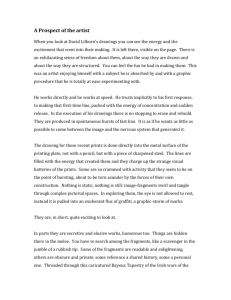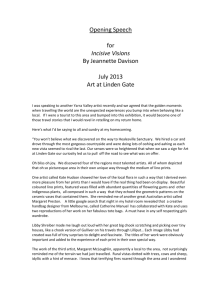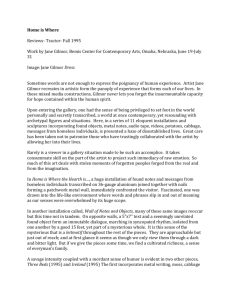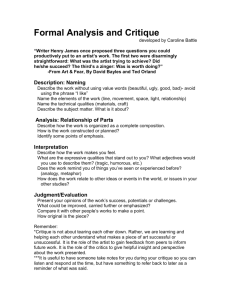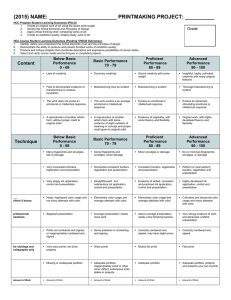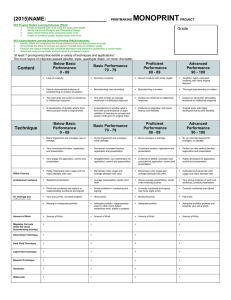To John Bryant From Bob Wallace October 6, 2012 Beginning of a
advertisement
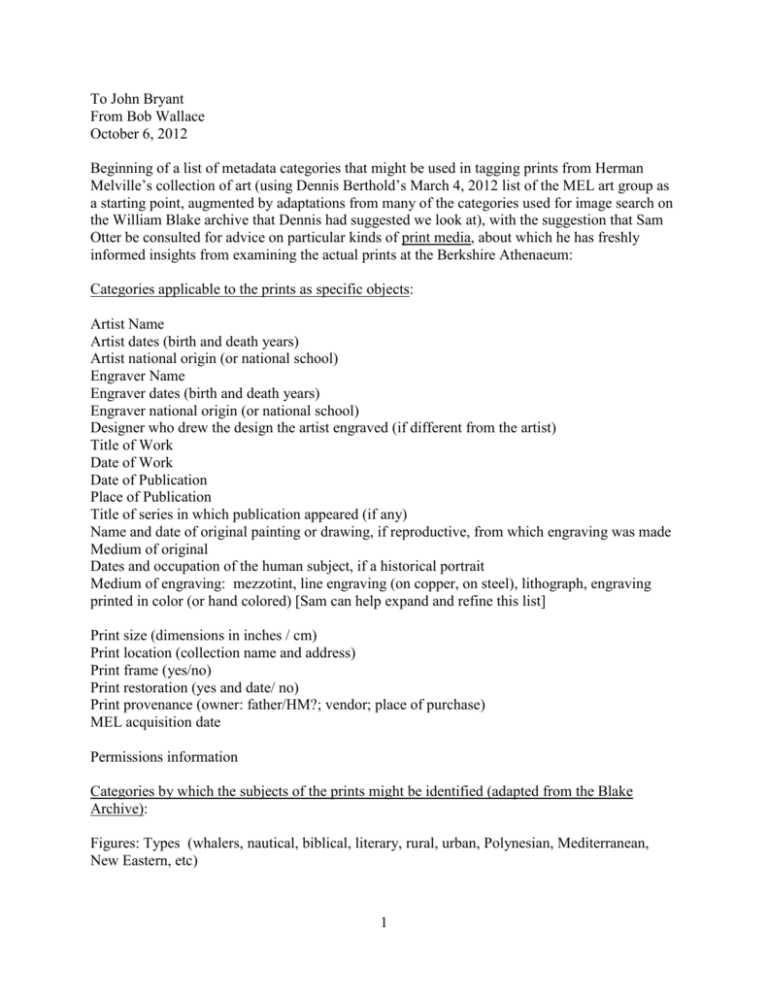
To John Bryant From Bob Wallace October 6, 2012 Beginning of a list of metadata categories that might be used in tagging prints from Herman Melville’s collection of art (using Dennis Berthold’s March 4, 2012 list of the MEL art group as a starting point, augmented by adaptations from many of the categories used for image search on the William Blake archive that Dennis had suggested we look at), with the suggestion that Sam Otter be consulted for advice on particular kinds of print media, about which he has freshly informed insights from examining the actual prints at the Berkshire Athenaeum: Categories applicable to the prints as specific objects: Artist Name Artist dates (birth and death years) Artist national origin (or national school) Engraver Name Engraver dates (birth and death years) Engraver national origin (or national school) Designer who drew the design the artist engraved (if different from the artist) Title of Work Date of Work Date of Publication Place of Publication Title of series in which publication appeared (if any) Name and date of original painting or drawing, if reproductive, from which engraving was made Medium of original Dates and occupation of the human subject, if a historical portrait Medium of engraving: mezzotint, line engraving (on copper, on steel), lithograph, engraving printed in color (or hand colored) [Sam can help expand and refine this list] Print size (dimensions in inches / cm) Print location (collection name and address) Print frame (yes/no) Print restoration (yes and date/ no) Print provenance (owner: father/HM?; vendor; place of purchase) MEL acquisition date Permissions information Categories by which the subjects of the prints might be identified (adapted from the Blake Archive): Figures: Types (whalers, nautical, biblical, literary, rural, urban, Polynesian, Mediterranean, New Eastern, etc) 1 Figures: Historical Characters (Innocent X, Napoleon, Plato, Socrates, etc,) Figures: Biblical and Literary Characters (St. Paul, Lazarus, St. Cecilia, Wallenstein, Fridolin, etc) Landscape: mountain, desert, plain; pastoral, Seascape: Open sea, sea shore Actions: whaling, warfare, amatory, weddings, meditating, boating, traveling, etc. Animals: whales, camels, dogs, cats, elephants, horses, turtles, etc. Vegetation: trees, flowers, wooded, barren, lakeside, seaside, etc. Objects: Art, Literature and Writing, Music (artist’s studio, brushes, writer’s study, pens, paper, musical performance, individual instruments, etc.) Objects: Death, Disease, and the Grave (graveyards, dying individuals, murder, monuments to the dead, biers, sepulchers, etc.) Objects: Furniture and Housewares (couch, table, art or maps on wall, dish, poultry, fish, bed, drink, carpets, tapestries, etc.) Objects: Games (skittles, bowling, cards, etc) Geographical Features: lake, ocean, mountain, cave, river, waves, waterfall, shore Locations (Cities, Countries, Mythic Locations): Rome, London, Jerusalem, Vienna, Edinburgh; Switzerland, Palestine, Polynesia, Greece; Heaven, Hell, Purgatory, etc. Architectural structures: churches, triumphal arches, gates, town halls, pastoral retreats, monasteries, abbeys, ruins, urban decay, towers, etc. The Sky, the Weather, Atmospheric Conditions: rays of light, bolts of lightning, storm on land, storm at sea, lee-shore sea storms, calm, angelic presences, etc. Transportation and vehicles: locomotives, battleships, tugboats, carriages, passenger boats, fishing boats, whaling ships, etc. Weapons: harpoons, guns, knives, artillery, club, shield, whip, etc. Other objects: to be proposed. 2
